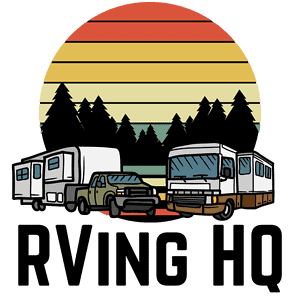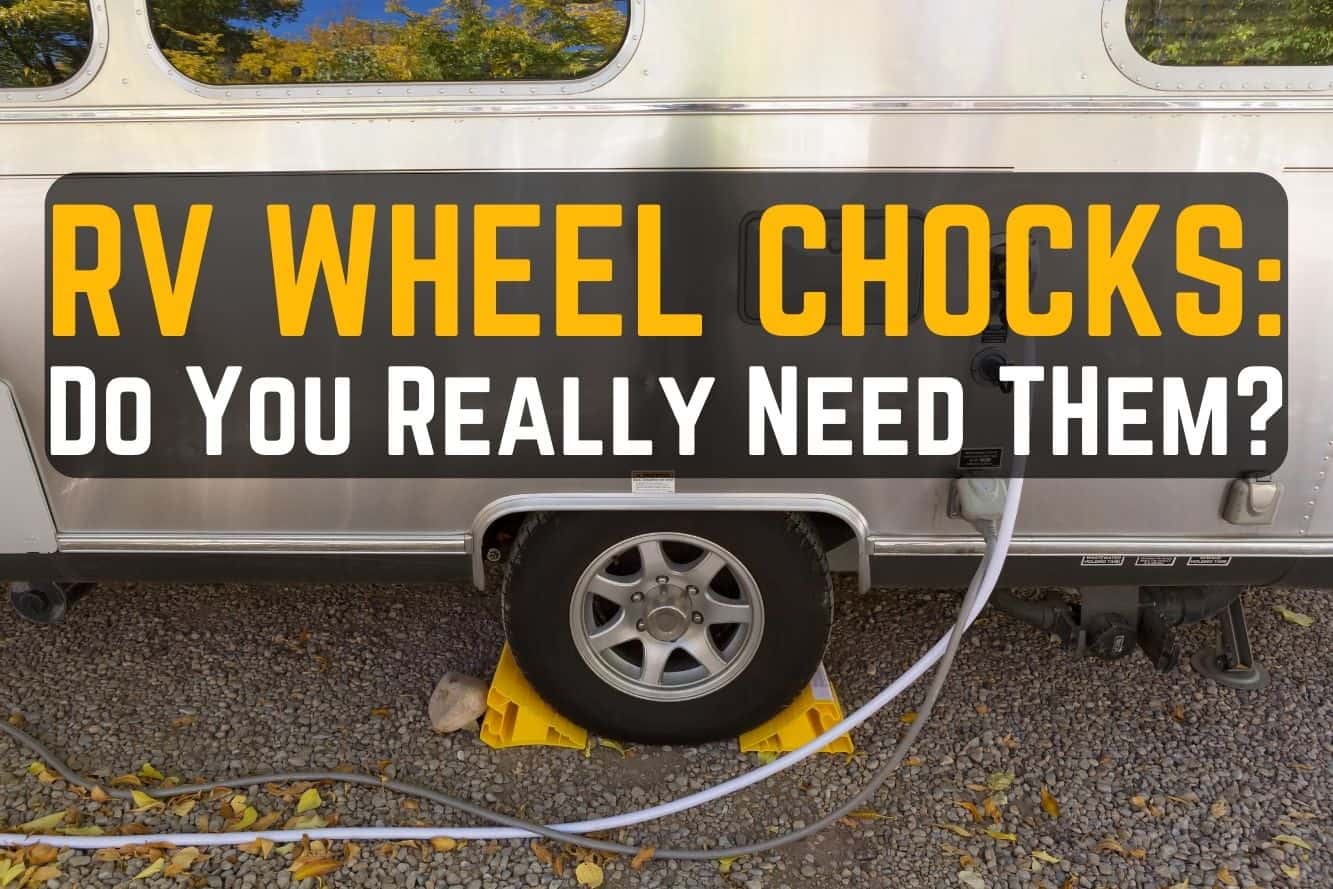Do you love the freedom of hitting the open road in your RV? There’s nothing quite like the feeling of exploring new destinations and enjoying all that nature has to offer. But with that freedom comes responsibility, particularly when it comes to safety. One essential item for any RV owner is a set of wheel chocks. These simple yet effective devices are designed to keep your vehicle from rolling or moving, preventing accidents and keeping you and your passengers safe.
So, what are RV wheel chocks exactly? They’re small blocks that fit against the wheels of your camper, helping to secure it in place. When parked on an incline or uneven surface, brake failure can be catastrophic if your wheels aren’t properly chocked.
In this article, we’ll explore everything you need to know about these essential safety items. From how they work, why they’re necessary, to which type is right for your needs. With this information in hand, you can hit the road with confidence and enjoy all the adventures ahead while staying safe along the way!
Table of Contents
What Are RV Wheel Chocks?
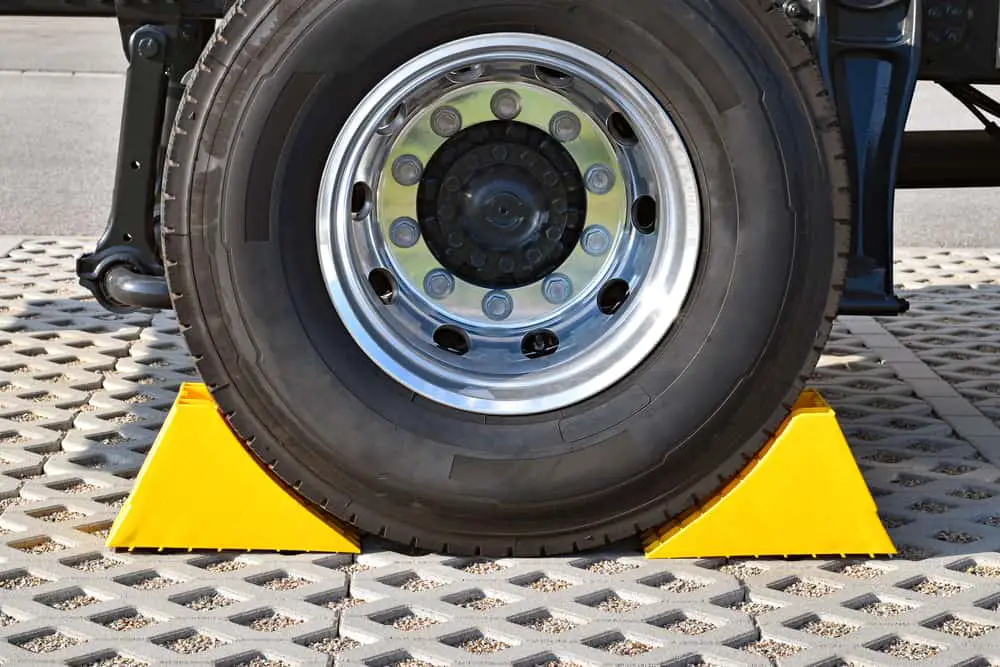
You might think wheel chocks are just an unnecessary expense. However, you really do need them to prevent your RV from rolling away when parked.
So let’s dive into what exactly RV wheel chocks are and why they’re so important.
RV chocks are typically small ramp-shaped devices that wedge underneath your tires to keep your camper in place.
There are a couple different types of chocks: the ramps or blocks that you place up against your wheels. There’s also scissor chocks that are placed between double axles to stabilize and stop the wheels from moving while parked.
How Wheel Chocks Work
RV wheel chocks stabilize and secure your camper on level ground and uneven ground. They’re recommended and necessary no matter where you’re parked or how strong your brakes are.
Wheel chocks are simple devices with a simple purpose. A wheel chock prevents a wheel from rolling in the event it gets pushed, there’s a brake failure, etc.
They’re basically a big wedge that your camper won’t roll over without momentum, and that’s why they work so well.
How to Use Wheel Chocks for Your Camper
Properly placing your wheel chocks can provide peace of mind for your parked camper. To use them effectively, position your RV on a flat surface and engage the parking brake.
Place the chocks snugly against both sides of each tire that will remain stationary while parked. For long or heavy trailers or steep inclines, chock both sides of each tire for added stability.
Wheel chocks should be used in combination with your parking brake and the rest of your camper set-up system like your leveling jacks and wheel stabilizers.
How Many Wheel Chocks Do I Need?
Having at least two wheel chocks is recommended to ensure the safety and stability of your parked camper. However, the number of chocks needed varies depending on the size and weight of your trailer as well as the incline of your parking spot. For longer or heavier trailers or steep inclines, it’s best to chock both sides for added security.
If you’re in doubt, it’s always better to use more rather than less. You can use X-chocks between your tires and regular chocks underneath them – there’s no such thing as overkill here.
Are Wheel Chocks Really Necessary?
Yes. Using wheel chocks is a necessary safety precaution for all RVers, whether you’re camping or your RV is parked in storage. Using high-quality and durable chocks is essential for ensuring the safety and stability of your parked camper. Not only do they prevent accidents caused by unexpected movements, but they also provide peace of mind while you’re inside your RV.
While some may argue that chocks aren’t necessary, it’s important to remember that even a small gust of wind or slight incline can cause your parked rig to move unexpectedly. Don’t let the potential risks outweigh the freedom and enjoyment of your camping experience – invest in reliable wheel chocks to keep yourself and others safe on the road.
Types of Wheel Chocks
There are two main types of RV wheel chocks: block style and scissor chocks. While both serve the same purpose, scissor chocks are made for dual-axle trailers and can be used in combination with block chocks.
Chocks are made out of many types of material – typically heavy-duty plastic or heavy-duty rubber. In a pinch, you can even use blocks of wood to chock your wheels, but they may not be as effective.
It’s important to have at least two chocks in place, one on each side of the camper. You can just chock one set of wheels, but chocking both sets of wheels is wise, especially if your camper is heavy or you’re on a steep incline.
Block Chocks
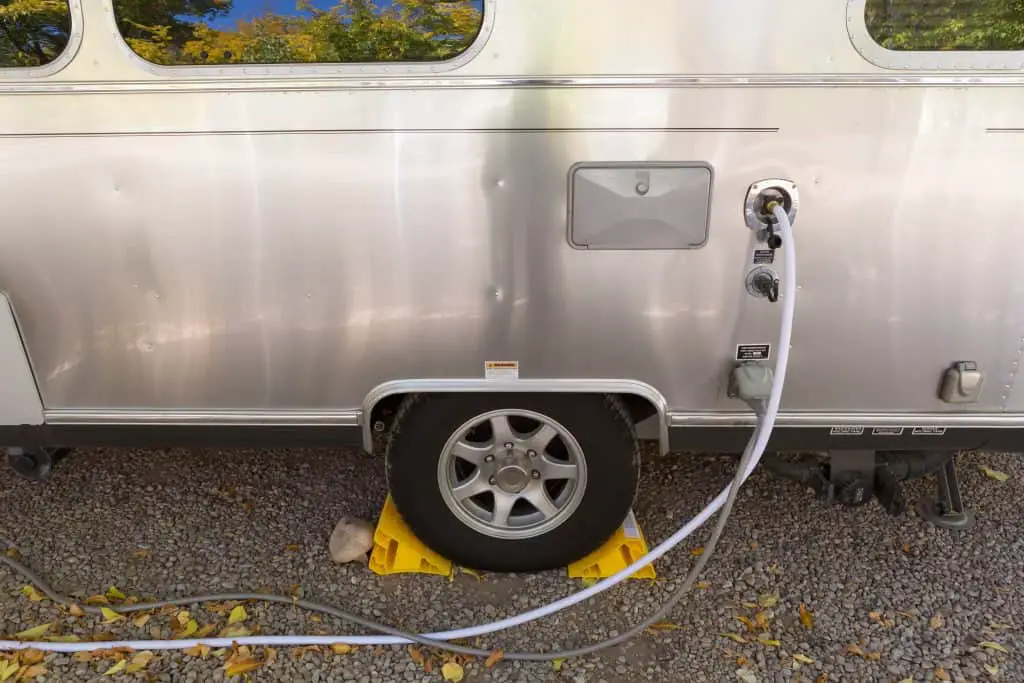
RV block chocks are the typical ramp-like chocks that wedge up underneath the wheel of your RV. They’re usually black, orange, or yellow.
These types of chocks are made of plastic or rubber and come in different sizes. For heavier trailers and motorhomes, heavy-duty rubber chocks are a great choice. They’re not prone to crushing and cracking and they can help prevent slippage due to their rubber construction.
X-Chocks
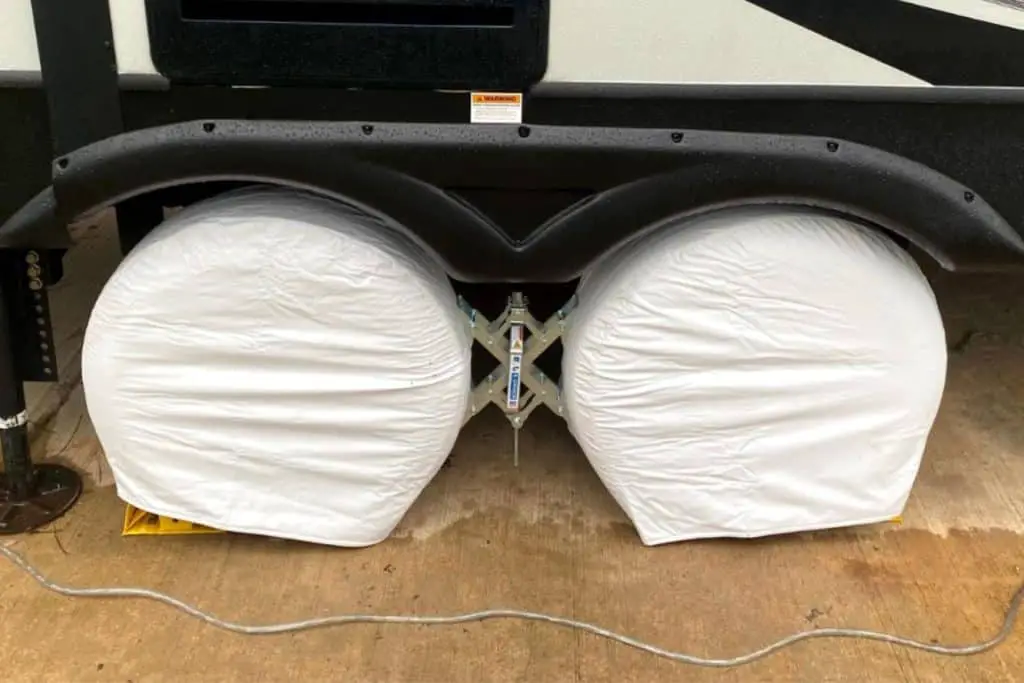
X-chocks or scissor chocks are X-shaped chocks made of metal that are placed between two wheels on a dual-axle trailer.
These chocks are mostly made for stabilizing your rig and helping stop movement when you’re inside of it. If you use these, it’s also recommended to use block chocks too. But not everyone does that – as long as you know it’s recommended, we think you’ll do the right thing!
How to Pick the Right Wheel Chocks for You
When it comes to selecting the perfect wheel chocks for your rig, you’re faced with a myriad of options that can be overwhelming, but fear not because with a little research and consideration, you’ll find what suits your needs best.
Start by determining the weight and size of your RV, as well as the type of terrain you’ll be parking on. If you have a larger or heavier trailer or motorhome, consider investing in heavy-duty rubber chocks like the Vestil LWC-15 for added security.
If stability is your main concern, BAL X-Chock stabilizers are an excellent option that fits easily into basement storage and can be locked with a padlock. Remember that having at least two chocks is recommended and that rubber chocks are superior in weight and materials.
With the right set of wheel chocks, you can rest easy knowing that your RV is securely parked and ready for adventure.
Conclusion
Well, congratulations on making it to the end of this article! You must really care about the safety of your RV.
But let’s face it – as important as they are, RV wheel chocks aren’t exactly the most exciting topic to read about. I mean, who doesn’t love spending their free time learning about different types of chocks and how they work?
But in all seriousness, don’t underestimate the importance of these little devices. They may seem like a minor accessory, but they can make a major difference in preventing accidents and protecting your investment.
So next time you’re setting up camp, take a few minutes to properly secure your RV with some sturdy wheel chocks. Your peace of mind (and your insurance company) will thank you later!
